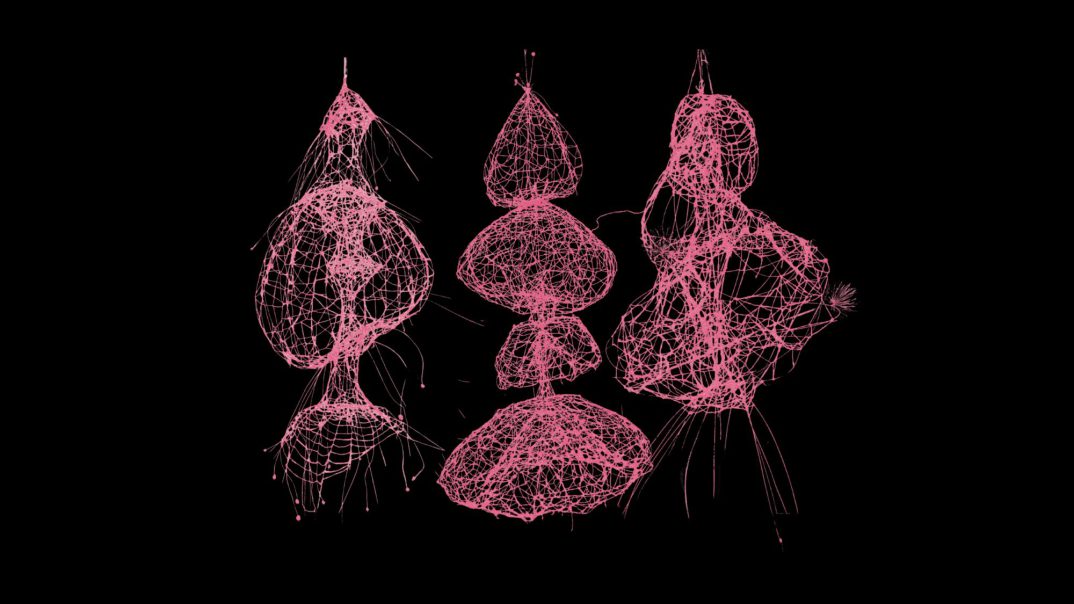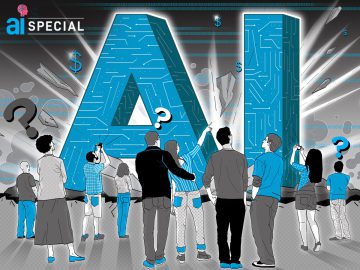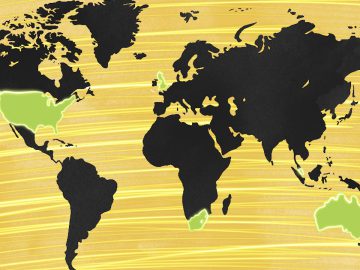The past few months have seen some tricky environmental questions enter artists’ circles on the topic of AI.
These include whether traditional art-making methods – using centuries-old materials such as paint, ink, cloth and glue – are more or less environmentally damaging than art made with AI software like ChatGPT, Stable Diffusion, DALL-E and the like.
It’s a vexing question that appears within a wider conversation being led by various Silicon Valley tech-heads who are also realising the devastating energy costs of their AI software as it becomes adopted by many millions of users across the globe.
As two prominent US tech researchers have pointed out, it is now undeniable that, ‘aside [from] the environmental toll of chip manufacturing and supply chains, the training process for a single AI model … can consume thousands of megawatt hours of electricity and emit hundreds of tons of carbon, which is roughly equivalent to the annual carbon emissions of hundreds of households in America’.
Added to that, when you realise the abovementioned costs do not include the resources that we, as the end users of AI, consume every time we ask the software to generate its “answers”, and when you factor in the vast numbers of people using AI at any given time (ChatGPT alone has upwards of 10 million users per day), you realise AI’s environmental footprint cannot be ignored any longer.
But what can artists do in the face of these realities? Are there any ethical and environmentally responsible ways to engage with AI as an artist? If so, what are the best-practice approaches?
ArtsHub asked two finalists in this year’s Northern Beaches Environment Art & Design Prize about their professional approaches to these AI concerns, as we all try to navigate our way through this new terrain.
Thinking beyond carbon footprint calculations
(Editor’s note: the artist’s name in this section appears in all lower-case at the artist’s request.)
pattie beerens is a Melbourne-based artist whose practice focuses on deconstructing and decolonising the ways that we, as humans, position ourselves within the natural world.
beerens works mainly with clay and natural fibres but, most recently, she has turned to generative AI as a new medium to explore.
‘I wanted to engage with generative AI for my latest work, the web (2024), because it is a ubiquitous new thing in the world and I wanted to understand what it might mean for my practice,’ beerens tells ArtsHub.
‘I have to say that I went in with a pretty negative view,’ she continues. ‘I expected it to be something that would undermine my practice unweaving human ways of thinking because I thought of it as a system that would likely reaffirm our patterns of anthropocentric thinking, with humans at the centre.’
But as beerens started her first artistic collaboration with an AI chatbot (powered by Google’s Gemini AI), she realised she had underestimated its abilities to circumvent mainstream ideologies, and was impressed with how quickly it adopted alternative points of view.
‘In my interactions with AI, I deliberately asked the AI to be a spider,’ beerens explains. ‘And I was surprised that the rituals I use to challenge my own thinking as an artist were very quickly understood by this AI “spider”.
‘Once we started discussing some of the philosophy that influences me – like the work of anthropologist Tim Ingold and philosopher Rosi Braidotti – the AI was very quickly able to meet me in that same philosophical and conceptual space,’ she adds.
Read: New research in performing arts sustainability
So, somewhat surprisingly, AI has helped expand her conceptual framework and has allowed her to explore ideas she says have taken her years to arrive at on her own.
But how does the artist feel about the fossil-fuel energy costs that sit behind her new creative processes, especially when her art practice is focused on environmental concerns?
‘I am very aware of the environmental cost of creating the large language models that sit behind generative AI,’ she says. ‘In fact, when you ask AI about its environmental impact, it will tell you that it’s massive.’
But beerens is quick to caution against limiting these environmental conversations only to the energy cost calculations associated with AI.
‘If we do that, we are not seeing the whole picture,’ she says.
‘Generative AI is already a significant part of many of the technologies we as artists use,’ she continues. ‘For example Canva, Photoshop, Instagram and even Microsoft Word all use AI. It’s very powerful and I am very concerned about its impact on resource abuse and consumption and, more broadly, on social equity and inclusion. That’s why as an artist I am actively exploring how I can work with it responsibly and respectfully and, in turn, advocate for sustainable, equitable and transparent access.
‘And, to my surprise, that is exactly what my collaboration with AI has supported me in doing,’ she adds.
‘It has led to new conversations about environmental concerns with people in my community, and it has also helped me explore new practices of relating respectfully with the world around me – in particular, to new relations with my spider neighbours.’
Can artists’ and tech companies’ environmental values align?
While beerens’ explorations with AI have allowed her to deepen her artistic practice around environmental concerns, for another Australian artist with a similar environmental outlook, there are fewer reasons to engage with these new AI tools.
For esteemed photo media artist Tamara Dean (also a finalist in this year’s Northern Beaches Environment Art & Design Prize), AI has made her feel a little wary of its potential effects on her work.
As she explains, ‘I’m not afraid of AI, and I can see that there are beneficial aspects for some artists. But for the kind of work I make, and the huge investment I have made in my processes – which are all generated by real-life experiences – I have found it confronting to realise that someone could potentially use AI image generating software to achieve similar artistic results.’
She continues, ‘It fills me with dread that you could just put a prompt into an AI program saying something like “floating fruit still life” and generate images that are similar to those I’m making in my underwater studio.’
Here, Dean is referring to works she makes using a custom built, 12-metre long underwater studio where she suspends objects and figures, which she photographs in uniquely suspended moments in time and space (see her recent series The Suspended Moment, 2023).
‘My underwater studio allows me to flip the world upside down in a way,’ Dean says. ‘I am able to make surprising discoveries through these processes, and create work that is somewhat abstracted from the realities of my above-water works.’
‘Sunken Forest’, 2023, by Tamara Dean. Pigment print on cotton rag. Image: Courtesy the artist and Michael Reid – Sydney and Berlin.
Despite these processes being rather expensive and labour-intensive, the artist says she is not the slightest bit tempted to use AI to assist her, or replace these ways of working.
‘I have made a strong point not to engage with the AI programs, because the integrity in the ways I make my work – using real-world processes and my underwater studio – are so fundamental to my art,’ Dean says.
And on the subject of AI’s environmental footprint, while the artist does not use these tools herself, she is highly aware of the bigger picture need for it to be used more sustainably to lessen its damaging impacts.
Read: Do you want AI? ArtsHub looks at Senate inquiry submissions
‘I recently read an article that pointed out that if environmental values are built into these AI systems from the start, then that would be a way to mitigate the problems that could be happening,’ she says.
‘In other words, if you build the values of environmental protection into your AI modelling systems – by making sure they are powered with renewable energy, for example – the intelligence could exist within them to work in environmentally positive ways.
‘So, while I am not interested in using AI to make my work, and I actually feel like AI poses somewhat of a threat to my work as an artist, I can see that if the right values are built into these systems, it can continue to exist without it being such a threat to our planet.’
beerens’ and Dean’s work is now on show as part of the 2024 Northern Beaches Environment Art & Design Prize exhibition. Full list of Prize finalists and exhibiting artists here.




